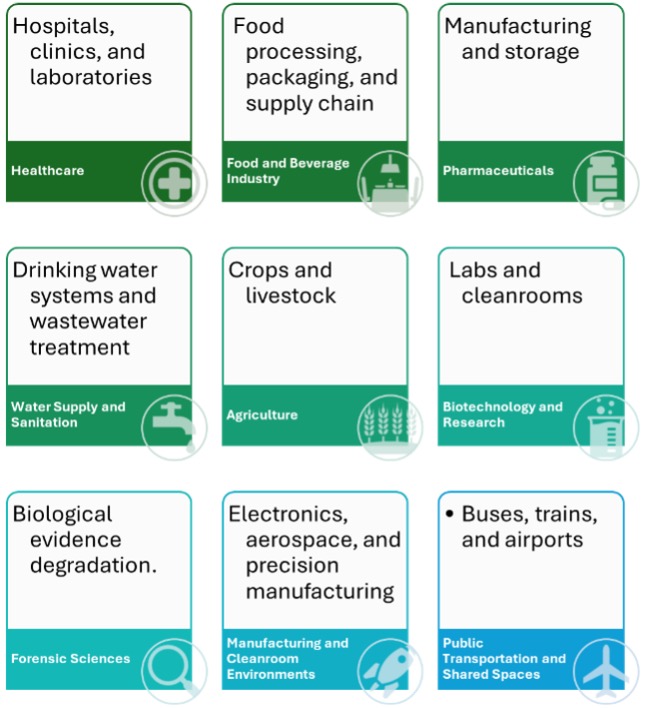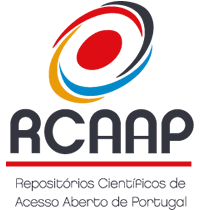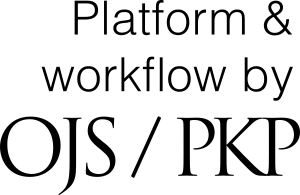Ozone: eliminating pathogens and safeguarding evidence in forensic sciences and other sectors
DOI:
https://doi.org/10.48797/sl.2025.349Keywords:
PosterAbstract
Background: Microbial contamination poses significant risks to biodiversity, food safety, and public health (Fig. 1) [1]. Traditional microbicide methods that rely on harmful chemicals are associated with risks to environmental health (e.g., toxicity to non-target organisms and resistance to pathogens) [2-4]. In forensics, microbial exposure decomposes biological evidence, staining or altering documents and textiles, corroding metals, weakening polymers, and introducing contamination that compromises analytical accuracy and evidence integrity. Objective: Given the urgent need for sustainable alternatives, this systematic review examines ozone as an ecological and effective solution for decontamination [5,6]. Methods: A systematic search was carried out in databases such as PubMed, ScienceDirect, and Google Scholar using the keywords "ozone decontamination," "ozone concentration," "application methods and environments," and "fungal load reduction." Inclusion criteria were based on thematic relevance, scientific rigor, and date of publication (2020-2025), while articles outside the specified period and articles not peer-reviewed were excluded. Results: Ozone, applied in its gaseous or aqueous forms, significantly reduces the pathogen load, with an average efficacy rate of over 85% in the case of fungal contamination. Higher ozone concentrations and longer exposure times are consistently associated with more significant reductions. Therefore, ozone is an effective microbicide agent that mitigates pathogen contamination while presenting minimal environmental impacts. Conclusions: After application, ozone rapidly reverts to oxygen, highlighting its advantage as a residue-free decontaminant. This is particularly relevant in forensics, where maintaining evidence’s integrity free of chemical contamination is essential. Ozone's ability to effectively disinfect surfaces and atmospheres and prevent microbial growth on stored evidence and forensic laboratories allows for accurate analysis and preservation of biological evidence. Creating standardized ozone application protocols in various sectors, including forensic science, improves decontamination efforts and security measures. Future research will focus on optimizing ozone application mechanisms and investigating long-term impacts on materials and environments to leverage its potential in the military and civilian domains.

Figure 1. Main sectors affected by microbial contamination.
References
1. Fisher, M.C. et al. Threats posed by the fungal kingdom to humans, wildlife, and agriculture. MBio 2020, 11, 10-1128, doi: 10.1128/mbio.00449-20.
2. Burandt, Q.C. et al. Further limitations of synthetic fungicide use and expansion of organic agriculture in Europe will increase the environmental and health risks of chemical crop protection caused by copper-containing fungicides. Environ Toxicol Chem 2024, 43, 19-30, doi: 10.1002/etc.5766.
3. Gikas, G.D. et al. Particularities of fungicides and factors affecting their fate and removal efficacy: A review. Sustain 2020, 14, 4056, doi: 10.3390/su14074056.
4. Islam, T. et al. Resistance mechanisms of plant pathogenic fungi to fungicide, environmental impacts of fungicides, and sustainable solutions. Plants 2024, 13, 2737, doi: 10.3390/plants13192737.
5. Epelle, E. I. et al. Ozone application in different industries: A review of recent developments. Chem Eng J 2023, 454, 140188, doi: 10.1016/j.cej.2022.140188.
6. Xue, W. et al. The use of ozone technology to control microorganism growth, enhance food safety and extend shelf life: A promising food decontamination technology. Foods 2023, 12, 814, doi: 10.3390/foods12040814
Downloads
Published
How to Cite
Issue
Section
License
Copyright (c) 2025 Guilherme Gomes, Manuela Oliveira, Luís Marques Fernandes, Wilson Antunes

This work is licensed under a Creative Commons Attribution 4.0 International License.
In Scientific Letters, articles are published under a CC-BY license (Creative Commons Attribution 4.0 International License), the most open license available. The users can share (copy and redistribute the material in any medium or format) and adapt (remix, transform, and build upon the material for any purpose, even commercially), as long as they give appropriate credit, provide a link to the license, and indicate if changes were made (read the full text of the license terms and conditions of use).
The author is the owner of the copyright.









